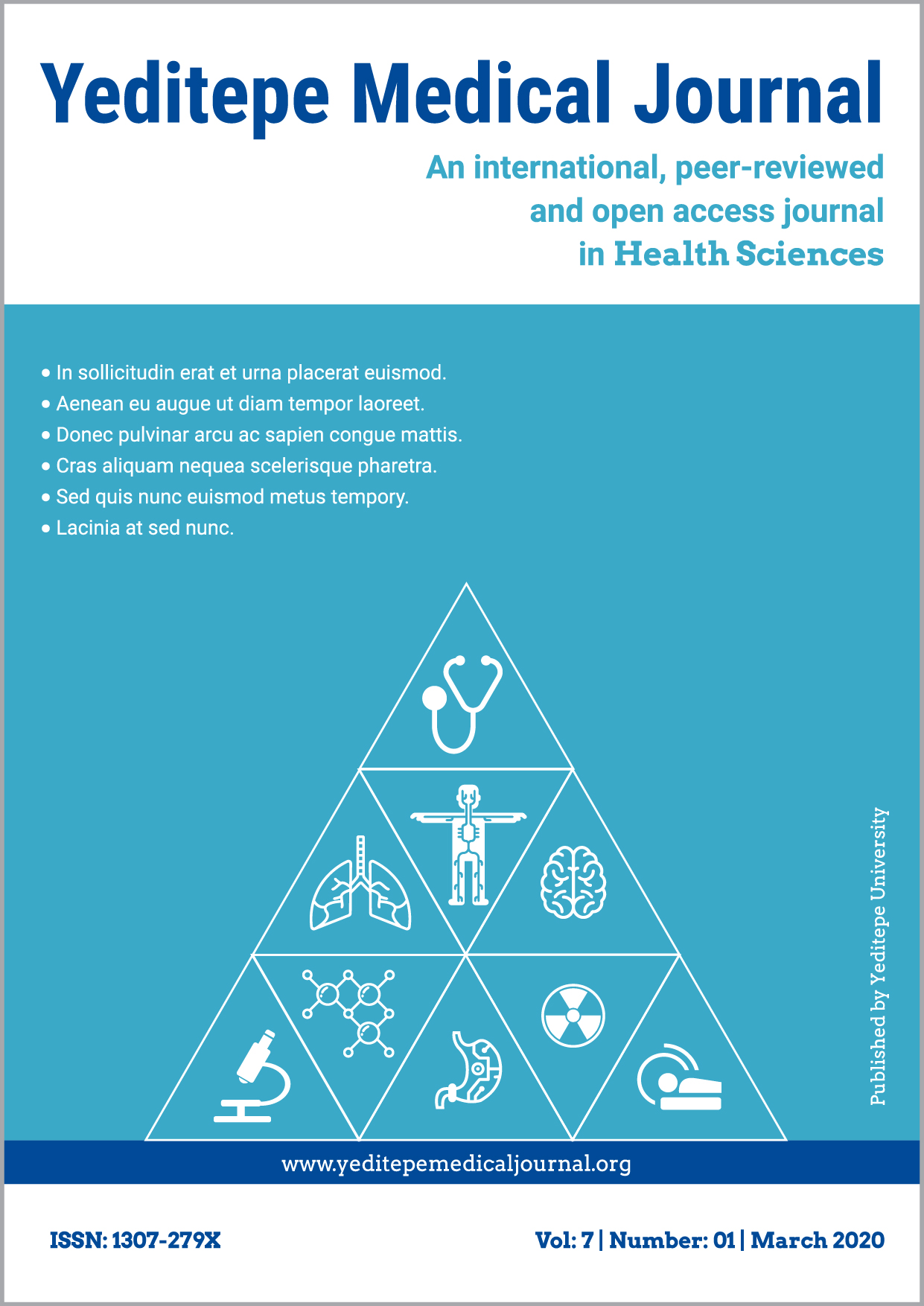OPEN AND ENDOSCOPY ASSISTED TRIGONOCEPHALUS SURGERY: REPORT OF TWO CASES
Burhan Oral Gudu1, Kaan Yaltirik2, Engin Ciftci1, Buse Sarigül2, Ayda Parnian Fard2, Basar Atalay21Kanuni Sultan Süleyman Education and Research Hospital, Department of Neurosurgery, Istanbul, Turkey2Yeditepe University School of Medicine, Department of Neurosurgery, Istanbul, Turkey
Introduction: Reporting two cases with trigonocephalus, treated by open and endoscopic surgery. Materials and Methods: Craniosynostosis refers to premature fusion of one or more cranial vault sutures. Trigonocephaly is the second most frequent type of craniosynostosis and is associated with a remarkable occurance of intracranial abnormalities and neuropathology. Patients with metopic craniosynostosis are traditionally treated with fronto-orbital advancement to correct hypotelorism and trigonocephaly. Alternatively, endoscopic-assisted treatment comprises narrow osteotomy of the fused suture followed by postoperative helmet therapy. Results: The first patient is a first-born 6-month old male to healthy parents. After he was diagnosed as trigonocephaly he underwent surgery under general anesthesia. Open surgery was performed. Postoperatively the patient was monitored in the intensive care unit and was discharged 3 days later with no complications. Second year control images revealed physilogical formation of cranium. The second patient is a 3-month old male, in whom the vaginal delivery was at 40 weeks of gestation. After he was diagnosed as trigonocephaly he underwent surgery under general anesthesia. Endoscopy assisted microsurgery was performed. Postoperatively the patient was monitored in the intensive care unit and discharged 3 days later with no complications. Early cranial CT showed no extra complications and trigonocephalus getting better. Conclusion: Endoscopy assisted surgery is safe and efficient while allowing shorter operative times, reduced costs due to decreased hospital stay, and fewer blood transfusions. However, minimally invasive treatment is only possible in cases with early diagnosis and cooperation in using a postoperative helmet therapy.
Keywords: Craniosynostosis, Trigonocephalus, Endoscopy Assisted Surgery.AÇIK VE ENDOSKOPİ YARDIMLI TRİGONOSEFALİ CERRAHİSİ: 2 VAKA SUNUMU
Burhan Oral Gudu1, Kaan Yaltirik2, Engin Ciftci1, Buse Sarigül2, Ayda Parnian Fard2, Basar Atalay21Kanuni Sultan Süleyman Education and Research Hospital, Department of Neurosurgery, Istanbul, Turkey2Yeditepe University School of Medicine, Department of Neurosurgery, Istanbul, Turkey
Amaç: Açık ve endoskopik cerrahi ile tedavi edilen ili trigonosefali vakasının sunumu. Materyal ve Method: Kraniosinostoz, bir veya birden fazla kranyal kemik sütürünün prematür füzyonu olarak tanımlanır. Trigonosefali, sinostozun ikinci en sık görülen tipidir (insidansı, 1: 5,200) ve intrakraniyal anomaliler ve nöropatolojilerle belirgin ilişkisi vardır. Metopik kraniyosinostozu olan hastalar, hipotelorizm ve trigonosefalinin düzeltilmesi amacıyla fronto-orbital yaklaşımla tedavi edilir. Alternatif olarak; endoskopik tedavi, füzyonlu suture dar bir osteotomi yapılmasını takiben postoperatif kask tedavisini kapsamaktadır. Bulgular: İlk hasta, sağlıklı ebeveynlerin ilk çocuğu olan 6 aylık erkek hastaydı. Trigonosefali tanısı aldıktan sonra genel anestezi altında operasyona alındı. Açık ameliyat gerçekleştirildi. Ameliyat sonrasında hasta, yoğun bakım ünitesinde monitorize edildi ve 3 gün sonra herhangi bir komplikasyon olmadan taburcu edildi. İkinci yıl kontrol görüntülemesinde kranyumun fizyolojik gelişimde olduğu görüldü. İkinci hasta, gestasyonun 40. Haftasında vajinal doğumla dünyaya gelen 3 aylık hastaydı. Trigonosefali tanısı aldıktan sonra genel anestezi altında operasyona alındı. Endoskopik yaklaşımla mikrocerrahi operasyonu gerçekleştirildi. Ameliyat sonrasında hasta yoğun bakım ünitesinde monitorize edildi ve 3 gün sonra herhangi bir komplikasyon olmadan taburcu edildi. Erken dönem kraniyal BT’de ekstra komplikasyona rastlanmadı ve trigonosefalinin iyiye gittiği gözlendi. Sonuç: Endoskopik yaklaşımla yapılan cerrahi güvenli ve yararlı olmasının yanında; ameliyat süresinin kısalması, daha az hastane yatış günü nedeniyle masraflarda azalma ve daha az kan transfüzyonu imkanı sunar. Ancak; minimal invazif tedavi, yalnızca erken tanı alan ve ameliyat sonrası dönemde kask tedavisine koopere olabilecek hastalarda mümkündür.
Anahtar Kelimeler: Kraniyosinostoz, Trigonosefali, Endoskopi Yardımlı Cerrahi.Manuscript Language: English


